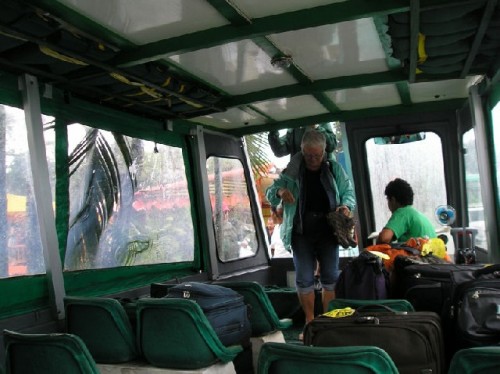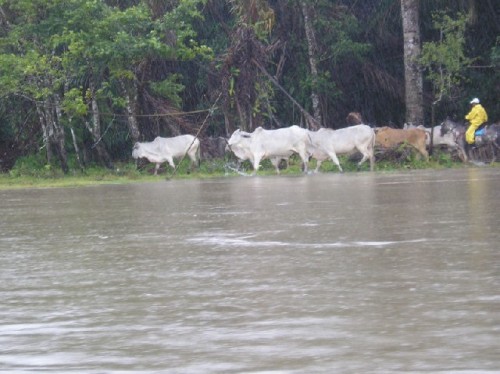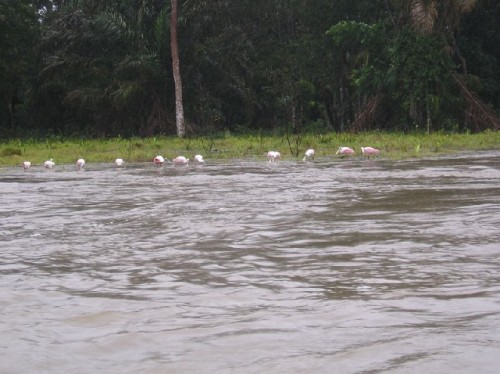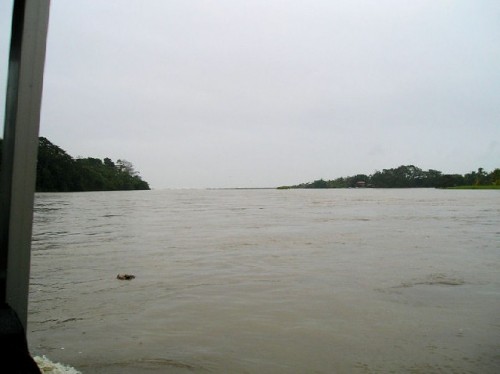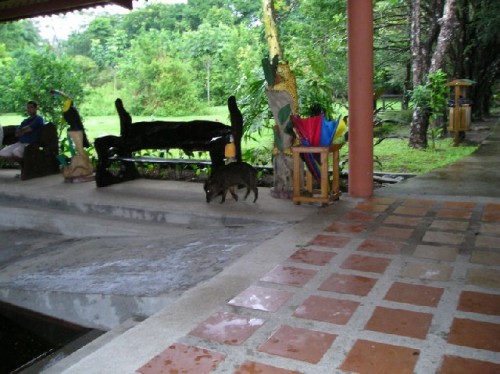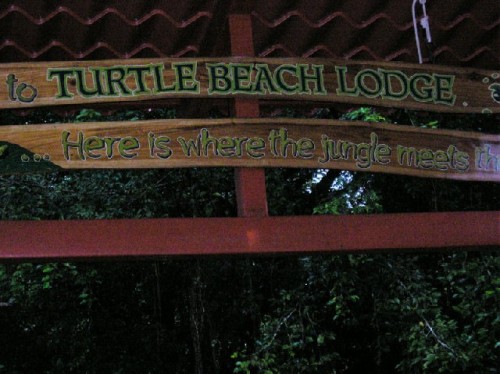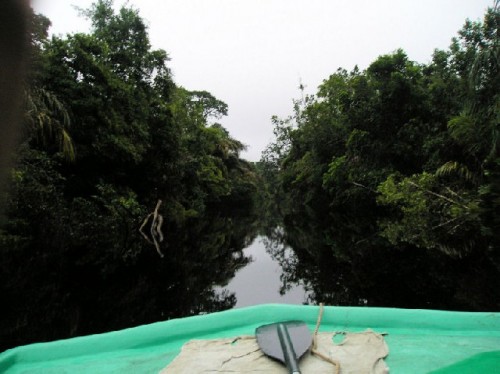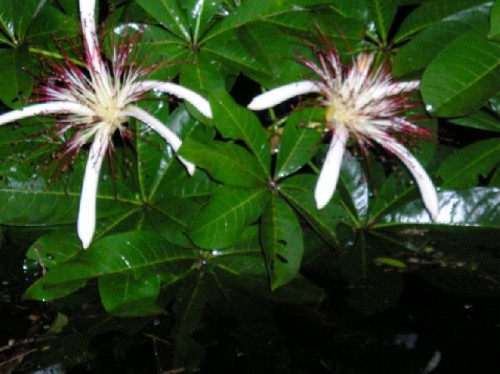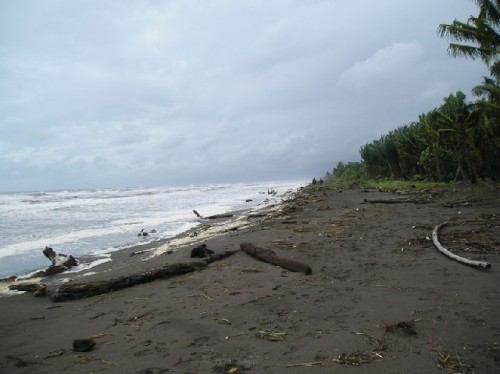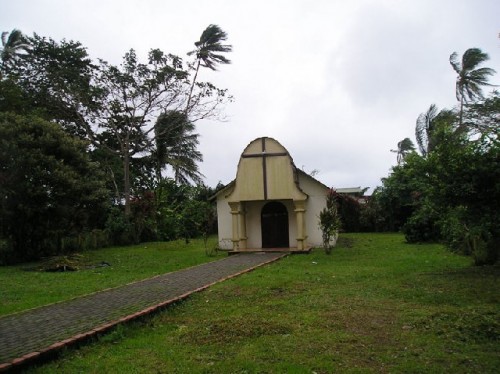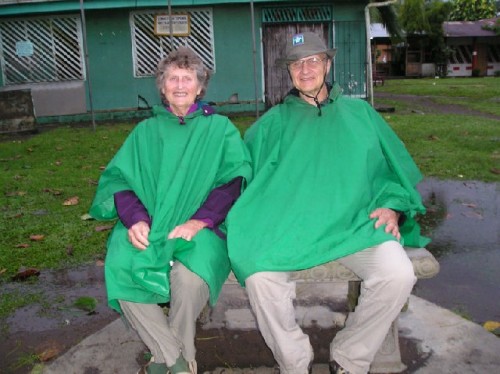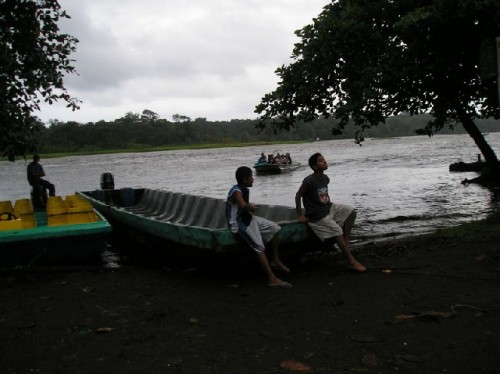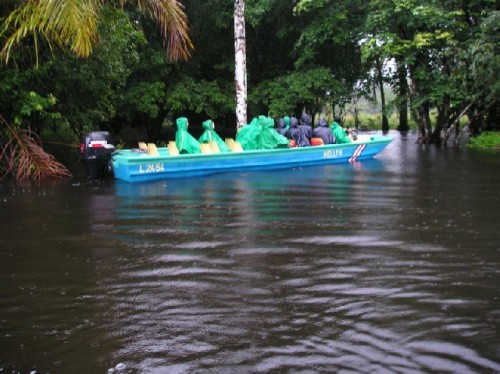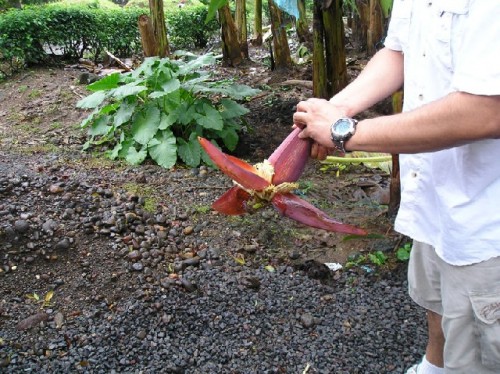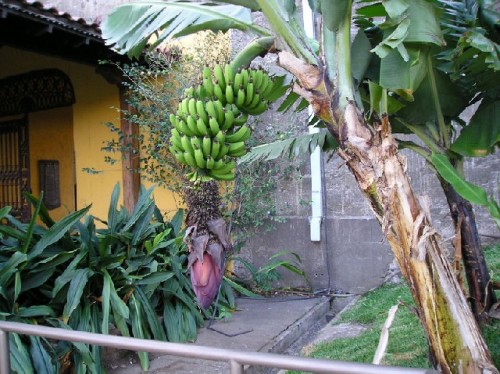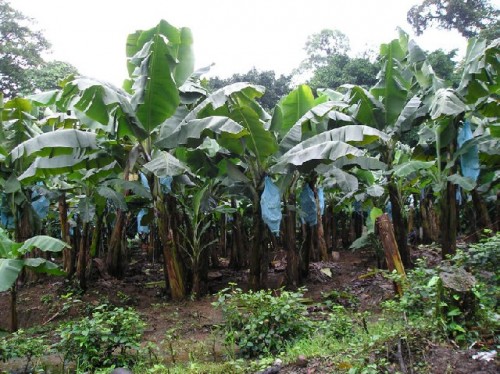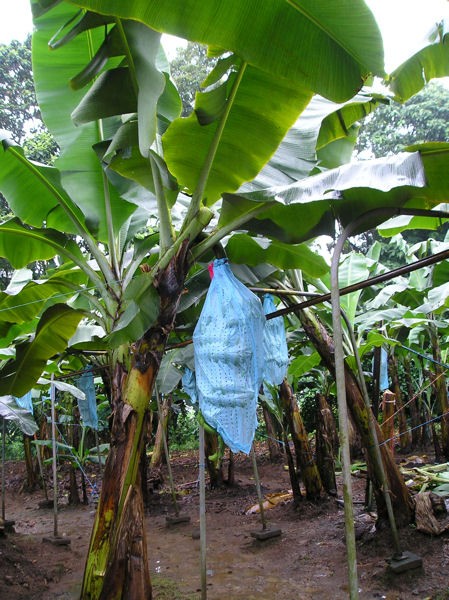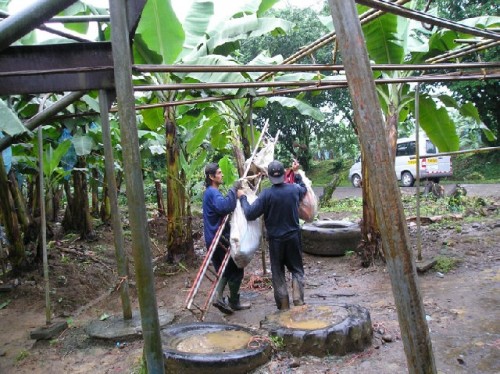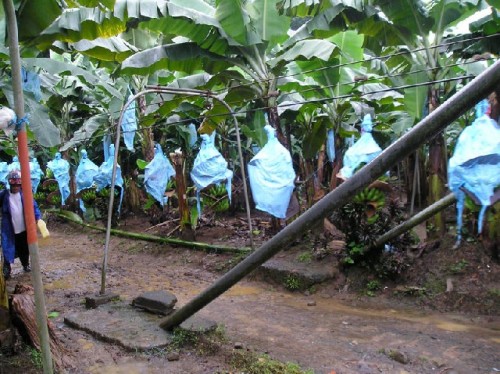Costa Rica
Part Four: Tortuguero
By: Zeren Earls - Feb 07, 2010
Tortuguero National Park is on the northeastern Caribbean coast of Costa Rica. To get there from San Jose, we had to drive through the usual rain and clouds on the eastern slope of Braulio Carillo National Park, as we had done before on the way to Sarapiqui. Early in the morning it was 55 degrees F and visibility was limited to the trees by the road side. Bumper-to-bumper traffic crawled through dense fog; impatient drivers tried to pass big trucks; cascading waterfalls roared beyond our fogged windows. Finally a sign in Spanish saying "Bienvenidos a la Zona del Caribe" welcomed us to the Caribbean zone. The weather warmed up; people in shorts walked under large umbrellas; signs advertized employment opportunities.
This was supposed to be the dry season in the Caribbean region, but alas it had been raining for days nonstop. We passed by homes with flooded yards, men and children with umbrellas on bicycles, workers with machetes clearing out grass around the banana fields of the Del Monte plant, and trees with bunches of bananas wrapped in blue plastic. Pablo promised a stop to visit the plant on our way back. On a gravel road turned into swamp land, we drove through large puddles to the Cano Blanco dock, to board our boat for the hour-and-a-half trip to Tortuguero.
Alas, the dock was flooded. Our minibus could not get to the ramp since it, too, was partially underwater. We rolled up our pants; some in water shoes, others in bear feet, we walked through flood waters to the dock to transfer to our boat. The crew carried our luggage, skillfully holding it up high above the murky waters. Stepping on a milk crate, we climbed into the boat. As we dodged trees which had toppled into the water, we cruised along, empathizing with the cows herded away from the shores. Speeding on the inland canals, we got chilly after a while; with the wind flaps of the boat zipped up, the village of Tortuguero became an apparition as we passed by. Passing through a palm-ridged narrow waterway six hours after having left San Jose, we arrived at the Turtle Beach Lodge to welcoming cocktails.
Literally meaning "region of turtles," remote Tortuguero is the nesting site for three kinds of endangered sea turtles: the green, the hawksbill, and the leatherback. Therefore, their annual pilgrimage -- at different times for each species, with hatching two months later -- inspires much creativity among the locals. As we toured the grounds of the lodge, which was surrounded by beautiful gardens filled with flowers, we came upon a turtle-shaped swimming pool with a view of the Caribbean Sea. Upon entering my rustic cabin with its ceiling fan, I found on my bed two towels folded like a turtle with its head sticking out, a delightful sight despite the rain. We were in a jungle by the sea with flooded nature trails and windswept, debris-filled beaches.
Rain pounded through the night; the power went out for a while. At 6 am we donned green ponchos, provided on the boat, and went exploring the river channels. The water level, normally two feet, was up to nine; the canals, usually a little wider than a boat, stretched six feet on either side, submerging tree trunks. We were on a canopy ride by boat through various kinds of palm trees, where monkeys hid, as one-day flowers popped up despite the storm. The temperature, 68 degrees when we started out, had dropped to 62, as a result of two back to back cold fronts gripping the region.
After a heartwarming buffet lunch with soup at the lodge's open-air restaurant, we ventured to the village of Tortuguero during a pause in the rain. This predominantly black village was Caribbean in character with colorful houses and people. Mothers with children in tow walked down muddy paths without sidewalks and vehicular traffic; shopkeepers tended small shops crammed with goods; a juice vendor by the beach under her thatched stand, part of which had blown away, waited for an occasional customer. The church, the police station and the school, all sturdy and within walking distance, ensured essential services.
In keeping with the languid pace of our surroundings, we ambled on to the Turtle Research Center at the south end of the village. The worthwhile visit consisted of educational exhibits and talks. We learned that turtles lay eggs by digging two holes between the shore and the grassy edge of the beach. One of the holes acts as a decoy to confuse predators, while the other incubates the eggs. A turtle can hatch up to one hundred eggs in two weeks. Since the eggs are a food source as well as a delicacy, only one egg in a hundred survives to become an adult turtle.
The research center has a turtle adoption program for those who want to support its work. A turtle may be adopted in the name of a loved one for $100. The gift shop carries T-shirts, hats, bags and other turtle memorabilia. I bought a crocheted bag with a colorful embroidered turtle design, made by a woman employed by the center. Wending our way back to the dock, we stopped in a few of the shops, pleasing vendors, who depend on tourist income. North of the village is the river mouth, where waves break in the Caribbean. From the village we set out up another river channel to return to our lodge.
In the morning we had to take an alternate route to go back to San Jose, as the one we had come on was flooded. It was still raining. Our luggage placed in heavy duty plastic bags, we started on what was ordinarily a twenty-minute boat ride, but which took us an hour due to fallen trees on the canals. While our boat driver navigated his way around branches, we saw another boat with tourists, viewing spider monkeys. We neared the shore for a glimpse of the monkeys, and spotted an armadillo as a bonus. Finally we reached the dock and were relieved to see a minibus waiting for us. We quickly boarded it, happy to leave the monsoon behind.
On the alternate route, which took us through Guapiles, we stopped by banana fields to make up for the missed opportunity to visit the Del Monte plant. Bananas are rhizoids and are planted in soil with plenty of water. Within two weeks the plants flower and are tagged to keep track of ripening periods. In nine weeks bananas grow inside the flowers in bunches weighing 60 to 80 pounds each. During the growth process, bunches are bagged in plastic to keep insects out. When bananas are ready for picking, carreros (carriers) hook the bagged bunches onto a rail system connecting the fields to the processing plant for shipping. Illegal Nicaraguan laborers make over twenty trips a day picking, lifting and hooking the heavy bunches to the tram system, which travels over roads and rivers. The banana fields are sprayed every two weeks throughout the year, and are depleted after forty years.
Our return to San Jose after the two-week nature trip was a welcome change. Never in my life had I been in so many different climate zones in such a short period of time. We had traveled to five of the six different climate regions of tiny Costa Rica, experiencing hot, steamy wetlands; both rainy and dry forests; windswept and idyllic beaches; and the unforgettable monsoon of Tortuguero. This had been a once-in-a-lifetime adventure trip.
Endowed with such beauty and variety, Costa Rica makes the most of its riches; protected national parks constitute a great part of the country. Costa Rica is open to all who wish to live within its borders. 100,000 people from the United States live in its lush Central Valley, partaking in the Pura Vida, or "pure life". The Spanish phrase is a uniquely Costa Rican idiom meaning "everything is great." May it continue to be great for years to come! Pura Vida!




